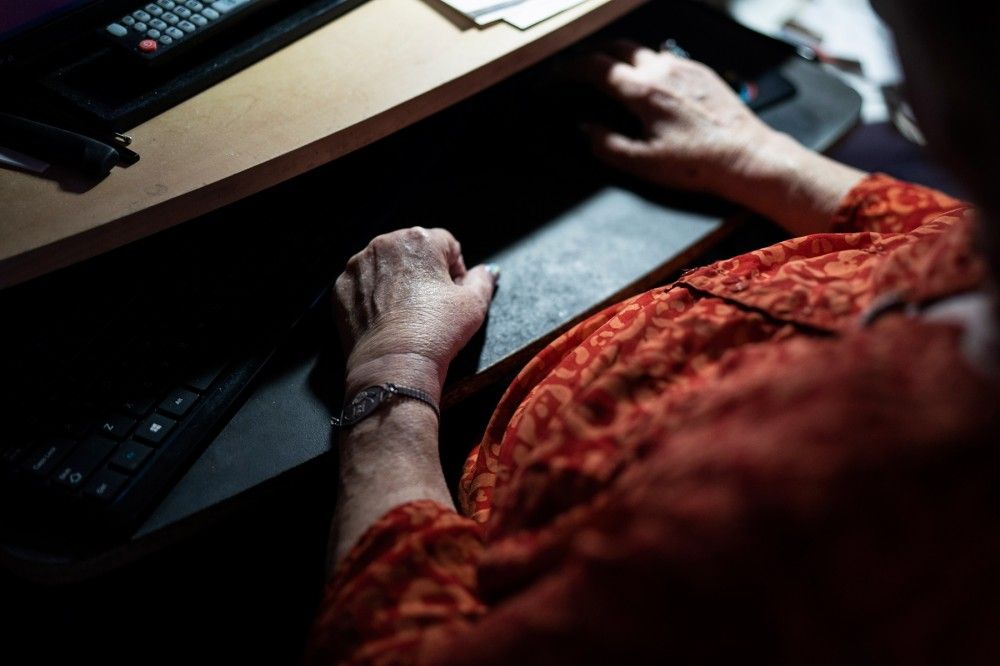
New Research Explains Why Boomers Share So Much Fake News
When it comes to who’s more likely to share online, there are a few usual suspects: the MAGA hat-toting uncle, the anti-vaxxer former bandmate who spends hours going on Facebook Live and ranting in front of the Microsoft office, the kooky aunt espousing wackadoo theories about JFK, Jr. But previous studies show there are a few unifying characteristics that can semi-reliably help you predict who’s more likely to share and engage with : By and large, they tend to be older adults, or if you’re less inclined to be charitable about it.
While it’s fairly well-established who’s sharing fake news, Nadia Brashier, a researcher in cognitive psychology and cognitive neuroscience at Harvard, wanted to know why. And the explanation is a lot more complex than one might expect.
According to a new review coauthored by Brashier that appears in the journal Current Directions in Psychological Science, adults over the age of 65 are more than seven times more likely than younger adults to engage with fake news, a relatively sizable margin. While the assumption tends to be that cognitive declines that arise in older age might be contributing to this, Brashier knew from her previous research that contrary to what one might expect, older adults are less likely than younger adults to be the victims of other types of scams, such as consumer fraud, so cognitive declines likely don’t tell the whole story. “There seems to be something about the environment that’s specific and important” that’s accounting for why older adults tend to share misinformation, she says.
To delve deeper into potential explanations, Brashier looked at two studies that found that age was one of the strongest predictors as to whether someone would share misinformation. The most immediately obvious explanation for this discrepancy, she says, is the fact that older adults are not digital natives the way millennials and Gen Z-ers, are, but “that’s not exactly fair,” she says, pointing out how people of all ages struggle to keep abreast of updates to social networks and apps. While misinformation tends to skew right-wing and older adults also tend to be more conservative, that only partially explains the phenomenon as well, considering Brashier and her team found people sharing misinformation all over the political spectrum. “There is a skew, but liberals are vulnerable as well,” she says.
What’s likely contributing to the phenomenon, Brashier says, is not how conservative or inherently gullible older adults are — it may have to do with “social changes that happen as we get older.” In general, she says, older people tend to have increasingly smaller social networks as they get older, as well as fewer of what she refers to as “weak ties,” or peripheral acquaintances (think that Facebook friend you went to camp with when you were 14 but haven’t seen in person in 15 years). “As they’re navigating social media and see news shared by people in their network, older adults might assume they can trust it because they have a short list of people they follow and they have close relationships with people, whereas we might come to our timeline more skeptical,” Brashier says.
Older adults also may approach the concept of sharing content differently than younger adults do, Brashier says. “If I disagree with an article, I might not share it at all,” she says. “Older adults might not interpret shares as an agreement or endorsement in the same way.” They also are less aware of the role algorithms play in surfacing content in news feeds, and how that shapes what you see as you scroll. “They might think something was shared by someone in their trusted network, when in fact it wasn’t,” she says.
In terms of how social media platforms can respond to this trend and adopt interventions to curb the spread of misinformation (as some, like Facebook, have already done by hiring fact-checkers), Brashier says that’s a difficult question to answer. “A lot of the common-sense approaches to fake news social media platforms have implemented may harm older users,” she says. She cites Facebook hiring third-party fact-checkers to flag information as false as one example: While that may sound effective in theory, there’s simply too much misinformation on social media for fact-checkers to keep up with, and both old and younger adults alike are likely to assume that, if a story is not labeled as false, that it’s more likely to be true. “So that can do more harm than good,” she says.
It may be more effective, Brashier says, for platforms like Facebook and Twitter to rethink the processes behind how users share links altogether. “Social media platforms could require an extra click when users share a link and ask them, ‘Is this information implausible or presented in a biased way?’ Adding ‘friction’ might be especially beneficial for older adults,” she says. But considering the primary draws of most popular social media platforms is how easy they are to use, she says, it’s unlikely that the big platforms would adopt such measures anytime soon.



